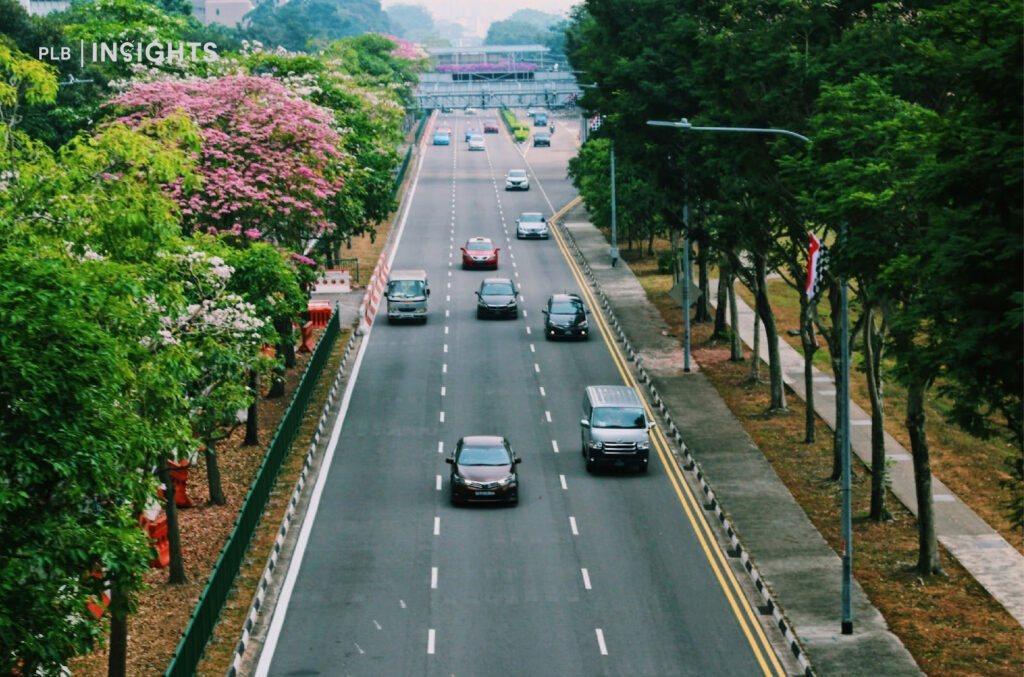
Buying a home can be both exciting and overwhelming, especially with the many factors to consider and the need to coordinate with various stakeholders, including government agencies. This is particularly true for pure landed properties, where higher quantum prices and additional legal and regulatory requirements demand careful attention.
For pure landed homes in Categories 1 to 3, which often require rebuilding, additions and alterations (A&A), or renovations, the process becomes even more complex. It’s crucial to consider key details before making an offer to ensure compliance with laws and regulations.
In this article, we’ll highlight some important factors discerning buyers should keep in mind when purchasing a pure landed property. However, the points covered here are just the tip of the iceberg. At PropertyLimBrothers, we strongly recommend seeking guidance from a qualified Building Surveyor along with real estate, legal, financial, and construction experts. This expert advice is essential to understanding the feasibility of rebuilds or A&A works and estimating the associated costs, ensuring a well-informed decision.
The key insights shared in this article were highlighted by our partner, Landed Surveyor and Builder Jake Yeoh, during the recently concluded Property Summit 2024. His expertise sheds light on critical considerations to help discerning buyers navigate the complexities of purchasing and redeveloping pure landed properties.
In case you missed it, watch the video below from our Landed Convention 2024, held in May. This insightful session, discussed alongside Jake Yeoh, delves into the pitfalls and challenges of rebuilding a pure landed home, offering valuable takeaways for homeowners.
Essential Documents to Navigate Rebuilding and A&A for Pure Landed Homes
When planning to rebuild or carry out A&A on your pure landed property, several government agencies may be involved, including Singapore’s National Water Agency (PUB), National Environment Agency (NEA), Land Transport Authority (LTA), Urban Redevelopment Authority (URA), and the Ministry of Manpower (MOM).
To simplify the process, you can use the government’s self-service platform, INLIS. This e-service allows you to purchase essential plans that provide valuable insights into potential additional works that may be required for your project. It’s highly recommended to review these plans before making an offer on your chosen property, as such works can add up to substantial costs.
Here are the key plans we advise you to purchase and study before proceeding with an offer:
Sewer Interpretation Plan (SIP)
A Sewerage Information Plan (SIP) is a crucial document for prospective pure landed home buyers in Singapore. It details the location and alignment of public sewers or pumping mains near the property, which is essential for planning any rebuilding or A&A works. If public sewers are present within the property boundaries, homeowners are responsible for protecting these structures during construction. This often involves constructing a reinforced concrete trench over the sewer to ensure accessibility for maintenance and repairs, with all associated costs borne by the homeowner. Therefore, obtaining and reviewing the SIP before making an offer is vital to understand potential obligations and avoid unforeseen expenses.
Road Line Plan (RLP)
This plan outlines areas designated by the Land Transport Authority (LTA) for future road widening or development. If a property falls within these safeguarded zones, any redevelopment, reconstruction, or significant additions and alterations (A&A) will require the owner to surrender the affected portion of land to the state without compensation. Failure to comply can result in the denial of the Temporary Occupation Permit (TOP) or Certificate of Statutory Completion (CSC), rendering the property unsellable. Therefore, reviewing the RLP before making an offer is crucial to understand potential land surrender obligations and avoid unforeseen complications.

Railway Protection Plan (RRP)
A Railway Protection Plan (RPP) is a critical document for prospective pure landed home buyers, especially in areas near existing or planned MRT lines, such as Jurong and Tuas. This plan outlines zones where construction activities are regulated to safeguard the integrity of railway structures. If your property falls within these zones, any redevelopment or A&A may require additional measures to protect nearby MRT infrastructure. These measures can include engineering assessments, specialised construction techniques, and compliance with stringent safety standards, potentially leading to increased costs and extended project timelines. Therefore, reviewing the RPP before making an offer is essential to understand these obligations and avoid unforeseen expenses.

Soil Strata Geological Plan
Understanding the geological composition of a property is crucial for prospective pure landed home buyers in Singapore, as soil conditions directly influence construction feasibility and costs. For instance, the eastern regions of Singapore are characterised by softer, alluvial soils, which may necessitate more extensive foundation work to ensure structural stability. This can lead to increased construction expenses and longer project timelines. Conversely, areas with firmer soil strata may allow for more straightforward and cost-effective building processes. Therefore, obtaining and reviewing a Soil Strata Geological Plan before making an offer is essential to accurately assess potential construction challenges and financial implications.
MOM Guidelines for Safe Renovations on Older Properties
When planning to rebuild or undertake A&A on your landed property, the Ministry of Manpower (MOM) plays a crucial role, particularly concerning asbestos management. If your property received its Temporary Occupation Permit (TOP) or Certificate of Statutory Completion (CSC) before January 1, 1991, you’re required to conduct an asbestos survey before commencing any building work. This is because buildings constructed before this date are more likely to contain asbestos-containing materials (ACMs).
The asbestos survey must be conducted by a competent person who has sufficient experience and training to perform the work. The surveyor must have successfully completed the WSQ Survey Asbestos and Other Fibres Risk Course.
If ACMs are identified, their removal must be carried out by an Approved Asbestos Removal Contractor (AARC) to ensure safety and compliance with regulations.
The cost of an asbestos survey typically starts around $2,000, while removal expenses can escalate into five-figure sums, depending on the extent of the work required. It’s important to note that these requirements are not limited to landed properties but apply to any building work on structures built before the specified date.
Engaging with MOM’s guidelines and approved contractors is essential to ensure a safe and legally compliant renovation process.
Power Infrastructure Considerations: Costs and Implications
It’s essential to consider the proximity and implications of existing electrical infrastructure managed by SP Group. While being near power sources ensures reliable electricity supply, certain elements like substations, overhead power lines, and overground boxes (such as aluminium pedestal boxes) can impact property aesthetics and future renovation plans.
If you plan to modify or remove these structures—such as relocating overhead power lines or underground cables—be aware that the associated costs are typically borne by the property owner. For instance, diverting underground cables requires engaging licensed professionals and obtaining necessary approvals, with expenses covering the diversion work and restoration of any affected public areas, the LTA.
Additionally, removing overhead lines may necessitate providing alternative power solutions for neighbouring properties, further increasing costs. Therefore, it’s crucial to assess the presence of such infrastructure and understand potential obligations before making a purchase decision.
Essential Pre-Renovation Checks for Pure Landed Properties: Power, Trees, and Compliance
Assessing Electrical Capacity: Why the Metre Compartment Matters
When evaluating a landed property in Singapore, the metre compartment is an important feature to examine, as it indicates the property’s electrical capacity and whether it has been upgraded to support modern power requirements. Properties with upgraded electrical systems are often equipped with a higher capacity supply, which is essential for powering high-demand installations such as lifts, electric vehicle (EV) chargers, or induction cookers.
Upgrading a property’s electrical capacity can be a significant undertaking. It typically involves engaging a Licensed Electrical Worker (LEW) to handle the technical aspects of the upgrade and coordinating with SP Group, Singapore’s electricity provider, to implement the necessary changes. The process may also involve road excavation to lay new cables, and all associated costs are borne by the property owner. This can add up to a substantial amount, depending on the extent of the upgrade required. Therefore, potential buyers should assess the existing metre compartment and consider their future electrical needs before committing to a purchase.
Tree Conservation Requirements: Ensuring Compliance with NParks Regulations
When planning redevelopment or A&A on a landed property in Singapore, it’s essential to conduct a topographical survey to identify existing trees on the site. The National Parks Board (NParks) enforces regulations under the Parks and Trees Act to conserve trees, particularly those with significant girth or of specific species. If redevelopment necessitates the removal of such trees, property owners are required to replant them, either on-site or at a designated location, to NParks’ satisfaction. Failure to comply with these replanting requirements can result in the withholding of the Temporary Occupation Permit (TOP) or Certificate of Statutory Completion (CSC), effectively delaying the project’s completion and occupancy. Therefore, engaging a qualified arborist to assess tree conservation needs and liaising with NParks during the planning stages is crucial to ensure compliance and avoid potential project delays.

Pre-Construction Surveys: Protecting Neighbours and Ensuring Compliance
Before initiating demolition or significant construction work on a pure landed property in Singapore, the Building and Construction Authority (BCA) mandates a pre-construction survey to document the condition of adjacent structures. This survey must cover a minimum zone extending 10 metres from the edge of the building slated for demolition. The purpose is to establish a baseline of neighbouring properties’ conditions, facilitating the identification of any damage resulting from the construction activities. Conducting this survey not only ensures compliance with regulatory requirements but also helps prevent potential disputes with neighbours regarding property damage.
In Summary
Purchasing a pure landed property in Singapore is a significant investment that requires careful planning and due diligence. From understanding government regulations and infrastructure requirements to assessing the property’s electrical capacity, soil conditions, and environmental obligations, each aspect plays a crucial role in ensuring a smooth redevelopment or renovation process. By thoroughly reviewing essential documents, engaging qualified professionals, and complying with regulatory guidelines, discerning buyers can make informed decisions and avoid costly pitfalls. Taking these steps ensures that your dream landed property becomes a reality while safeguarding its long-term value.
Buying a pure landed property can feel overwhelming with so many factors to consider. Let our expert consultants guide you every step of the way. From deciphering regulatory requirements to evaluating potential costs and ensuring compliance, we’ll steadfastly navigate this intricate process with you. Contact us today to ensure your property goals are met with confidence and ease.
Thank you for reading, and stay tuned! For more detailed insights regarding the landed property market, join our Landed VIP Club and stay updated with the latest market trends and expert advice.








